Amsterdam and Poland 2017
Day 6, Warsaw
Friday, June 9
We slept a little later this morning. The hotel served a beautiful
breakfast buffet in a huge room. There were many choices and everything
was delicious. After breakfast, we had the opportunity to meet our
tour director. We will gathered tonight at 6:00 for our first meeting
and a dinner. She was an attractive lady by the name of Marta. We also
met a couple from Rhode Island
 who
said they would like to go with us on our adventure to the POLIN Museum
of the History of the Polish Jews. The four of us took a taxi to the
Museum.
who
said they would like to go with us on our adventure to the POLIN Museum
of the History of the Polish Jews. The four of us took a taxi to the
Museum.
POLIN MUSEUM OF THE HISTORY OF THE POLISH JEWS
The museum is about four years old, quite large with wonderful
exhibitions. It is very interactive along with audio devices and traces
the 1000-year history of the Jews in Poland. It traces how the Jews
first arrived in Poland, why they stayed, and how Poland became home to
one of the largest Jewish communities in the world – there were 3.3
million Jews in Poland before the Holocaust. The history of the Jews
is traced through eight galleries. Below is a brief description taken
for the Guide to the Core Exhibition which is given to each visitor. It
is recommended that the visit could take up to three hours or more.
Gallery 1- The
Forest - the first gallery is a bridge from the front entrance to the
main hall and then a descent on the grand
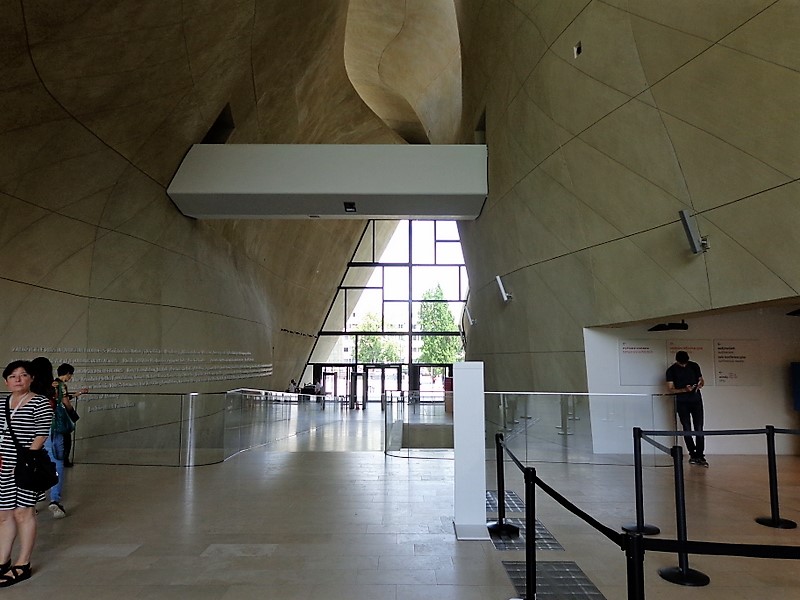 staircase
where you will discover a poetic forest, the setting for the Legend of
Polin. According to the legend, Jews fleeing persecution came east. When
they arrived in a forest, they heard the word Polin which sounded like
“rest here” in Hebrew. They knew then that this was a place to settle.
Polin is the Hebrew word for Poland. and the inspiration for the name of
the Polin Museum of the history of Polish Jews.
staircase
where you will discover a poetic forest, the setting for the Legend of
Polin. According to the legend, Jews fleeing persecution came east. When
they arrived in a forest, they heard the word Polin which sounded like
“rest here” in Hebrew. They knew then that this was a place to settle.
Polin is the Hebrew word for Poland. and the inspiration for the name of
the Polin Museum of the history of Polish Jews.
Gallery 2 – First Encounters
960 – 1500 This gallery illustrates the first 600 years. As early as
the 10th century, Jewish merchants were already traveling roads that
passed through Poland. By 1500 Jews were living in over 100 places with
organized Jewish communities in about half of them. Stories of the Jews
who lived in these towns are illustrated on the town wall, which like
the entire gallery is hand-painted. There are several interactive
displays.
Gallery 3 - Paradisus Iudaeorum
1569 – 1648 This gallery showed the Golden age for Jews in the
Polish–Lithuanian Commonwealth. Rabbinical authority and scholarship
reach new heights. Jewish communities were allowed to govern themselves
locally, regionally and nationally. The outbreak of the Khmelanytsky
uprising in 1648 devastated Jew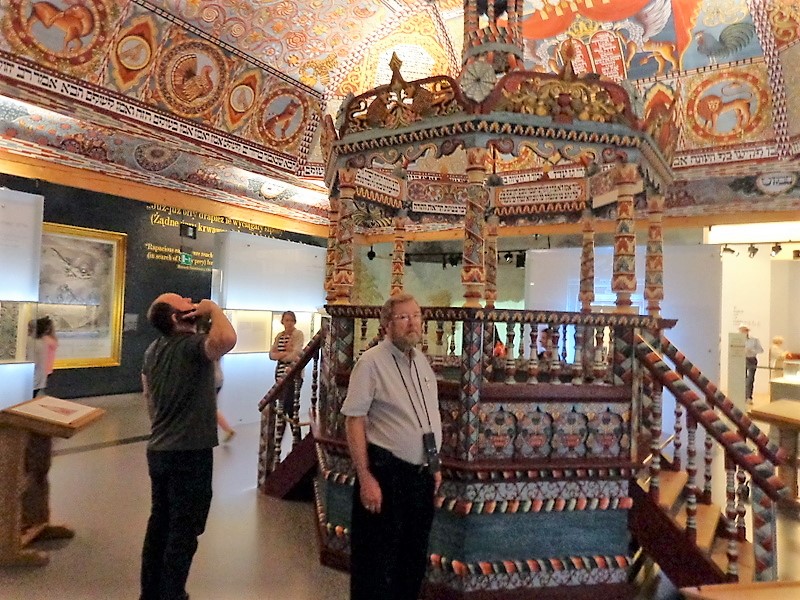 ish communities and left the Commonwealth
in ruins.
ish communities and left the Commonwealth
in ruins.
Gallery 4 – the Jewish Town 1648 -
1772 This gallery explored the daily life in small towns. In the
center of this gallery is a synagogue with a celestial canopy. There are
signs of the zodiac around the base of the cupola and the messianic
animals along the middle band.
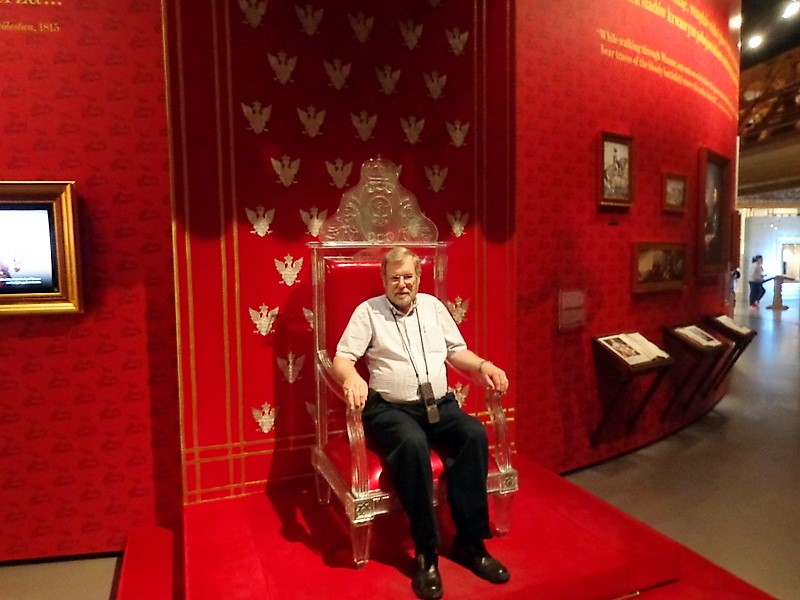 Gallery
5 – Encounters with Modernity 1772 – 1914 Between 1772 and
1795, Russia, Prussia, and Austria partitioned the Commonwealth and
inherited the large Jewish population living there. Jews were now
individual subjects of the monarch, who regulated their everyday lives
with law upon law. This day there was a new monarch elected to the
throne which was vacant at the time. This new king is King Thomas of
Accokeek!
Gallery
5 – Encounters with Modernity 1772 – 1914 Between 1772 and
1795, Russia, Prussia, and Austria partitioned the Commonwealth and
inherited the large Jewish population living there. Jews were now
individual subjects of the monarch, who regulated their everyday lives
with law upon law. This day there was a new monarch elected to the
throne which was vacant at the time. This new king is King Thomas of
Accokeek!
Gallery 6 – on the Jewish Street
1918 – 1939 With the collapse of the three empires during the first
world war and the creation of the second Polish Republic in its
aftermath, there began what some historians consider the second “Golden
age” for Polish Jews – despite economic hardships and rising
anti-Semitism.
Gallery 7 – Holocaust 1939 –
1945
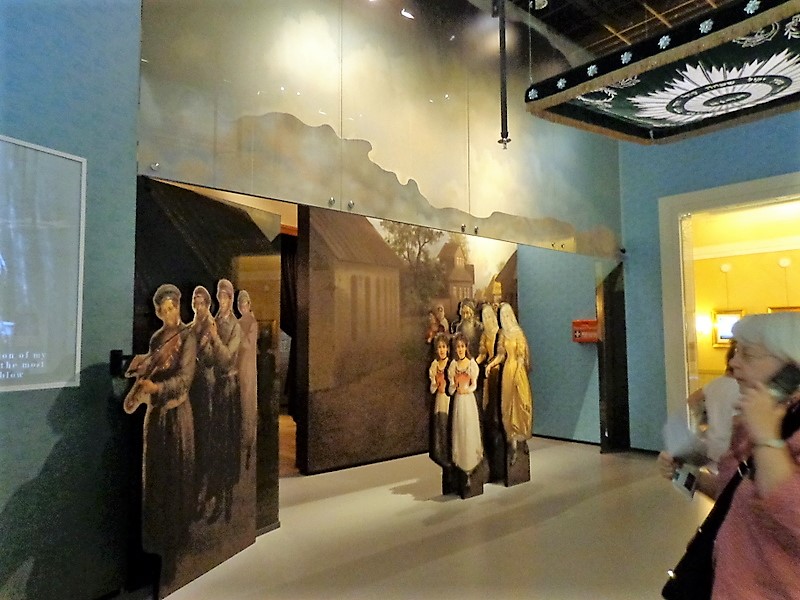 The story of the Holocaust is presented within the borders of
occupied Poland and focuses on the experience of the Jews. German
repressions separate and isolate Jews and force them into ghettos. The
German invasion of Poland marks the onset of mass
murder by death squads and then in death camps.
The story of the Holocaust is presented within the borders of
occupied Poland and focuses on the experience of the Jews. German
repressions separate and isolate Jews and force them into ghettos. The
German invasion of Poland marks the onset of mass
murder by death squads and then in death camps.
Gallery 8 – Postwar Years
1944 – today Barely 300,000 Polish Jews survived the war, most of them
in the Soviet Union. Those who remained in Poland helped to rebuild the
country and also Jewish communal life. Following the anti-Semitic
campaign of 1968 only about 10,000 Jews remained in Poland. After 1989,
with the fall of communism, there was a renewal of Jewish life on a
small scale.
THE WARSAW GHETTO UPRISING HEROES MONUMENT
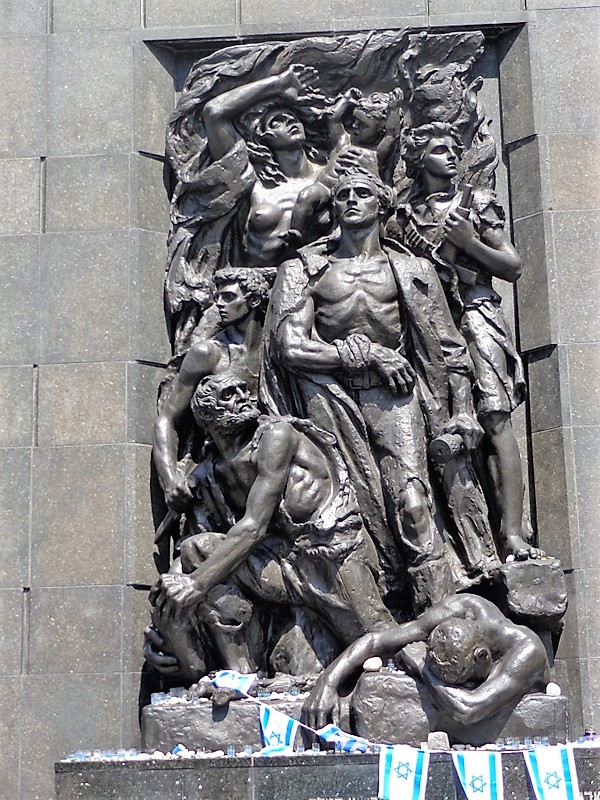 In
front of the Polin Museum is a large monument dedicated to the tens of
thousands who lost their lives during the 1943 Warsaw Ghetto Uprising.
It was designed by sculptor Nathan Rappaport and made of granite which
the Nazis imported from Sweden ironically to build their own victory
tower. The front of the monument has a bronze relief depicting a groups
of insurgents and the leader of the uprising , Mordacai Anielewicz, who
stands with a grenade in his hand. The back shows a groups of Jews
being marched to their death. There
is an exact copy of the monument in Yad Vashem in Israel.
In
front of the Polin Museum is a large monument dedicated to the tens of
thousands who lost their lives during the 1943 Warsaw Ghetto Uprising.
It was designed by sculptor Nathan Rappaport and made of granite which
the Nazis imported from Sweden ironically to build their own victory
tower. The front of the monument has a bronze relief depicting a groups
of insurgents and the leader of the uprising , Mordacai Anielewicz, who
stands with a grenade in his hand. The back shows a groups of Jews
being marched to their death. There
is an exact copy of the monument in Yad Vashem in Israel.
We meet our new friends again for lunch in the museum café. Then
we shared a taxi back to the hotel.
We would highly recommend this museum as a must for any visit to
Warsaw. It was a moving experience. I am sorry that I didn't take
more photos.
Back at the hotel, we met with the Tour Manager for a few moments.
She gave us some suggestions for the rest the afternoon. Our friends
wanted to go on a further exploration than us.
We walked a few blocks to see the Three Cross Square and St.
Alexander Church. The first mo nument
was erected in this square on the order of King August II Mocny in 1731.
It consisted of two gilded crosses standing on stone columns, designed
as the starting point for a monumental station of the cross complex. The
rococo statue of St John Nepomuk (set just behind the two columns) was
put up in 1752.
nument
was erected in this square on the order of King August II Mocny in 1731.
It consisted of two gilded crosses standing on stone columns, designed
as the starting point for a monumental station of the cross complex. The
rococo statue of St John Nepomuk (set just behind the two columns) was
put up in 1752.
ST. ANEXANDER'S CHURCH
 St.
Alexander's Church (whose lovely neo-classical portico looks out at the
original three crosses) was built at the beginning of the 19th Century.
Today, the total number of crosses in Plac Trzech Krzyży has reached
six, including the three on the church. St. Alexander’s Church
(modeled on the Pantheon in Rome) was designed and built between
1818-1825. Named after St Alexander to commemorate the coronation of the
Russian Tsar Alexander I as Kin
St.
Alexander's Church (whose lovely neo-classical portico looks out at the
original three crosses) was built at the beginning of the 19th Century.
Today, the total number of crosses in Plac Trzech Krzyży has reached
six, including the three on the church. St. Alexander’s Church
(modeled on the Pantheon in Rome) was designed and built between
1818-1825. Named after St Alexander to commemorate the coronation of the
Russian Tsar Alexander I as Kin g
of Poland, it was renovated and enlarged several times over the course
of the 19th century, only to be almost completely destroyed during the
Warsaw Uprising. After the war, it was rebuilt in its original,
neo-classical form.
g
of Poland, it was renovated and enlarged several times over the course
of the 19th century, only to be almost completely destroyed during the
Warsaw Uprising. After the war, it was rebuilt in its original,
neo-classical form.
Yesterday we had passed a very tempting French bakery that had
delicious looking cupcakes, tarts etc. We passed it again this
afternoon and the temptation was too great and we bought a cupcake each
to have as our afternoon snack back in our room.
At 6:00, we met our group in the lobby and then went into the
breakfast room and sat 4 to a table. We sat across from two ladies from
U.K. who were retired school administrators. Our Tour Manager, Marta,
gave us details about the tour. There are 44 on the trip, mostly
seniors, but a few people brought their adult children....no little
children. After that we went through a very tasty buffet line and ate
with the same ladies. It appears to be a very nice group of
traveling companions.
Day 15 coming soon
